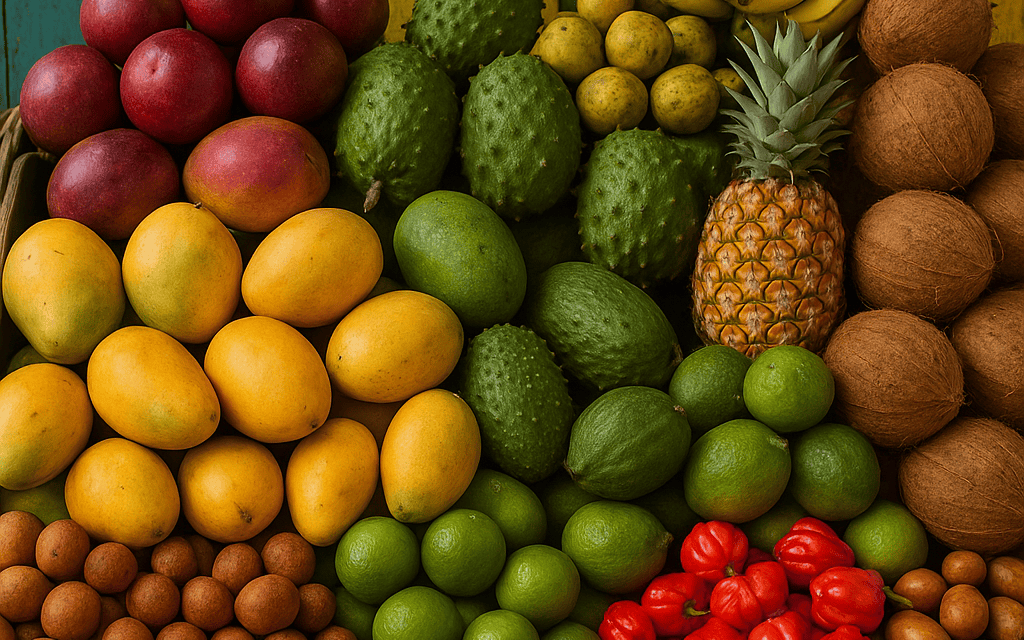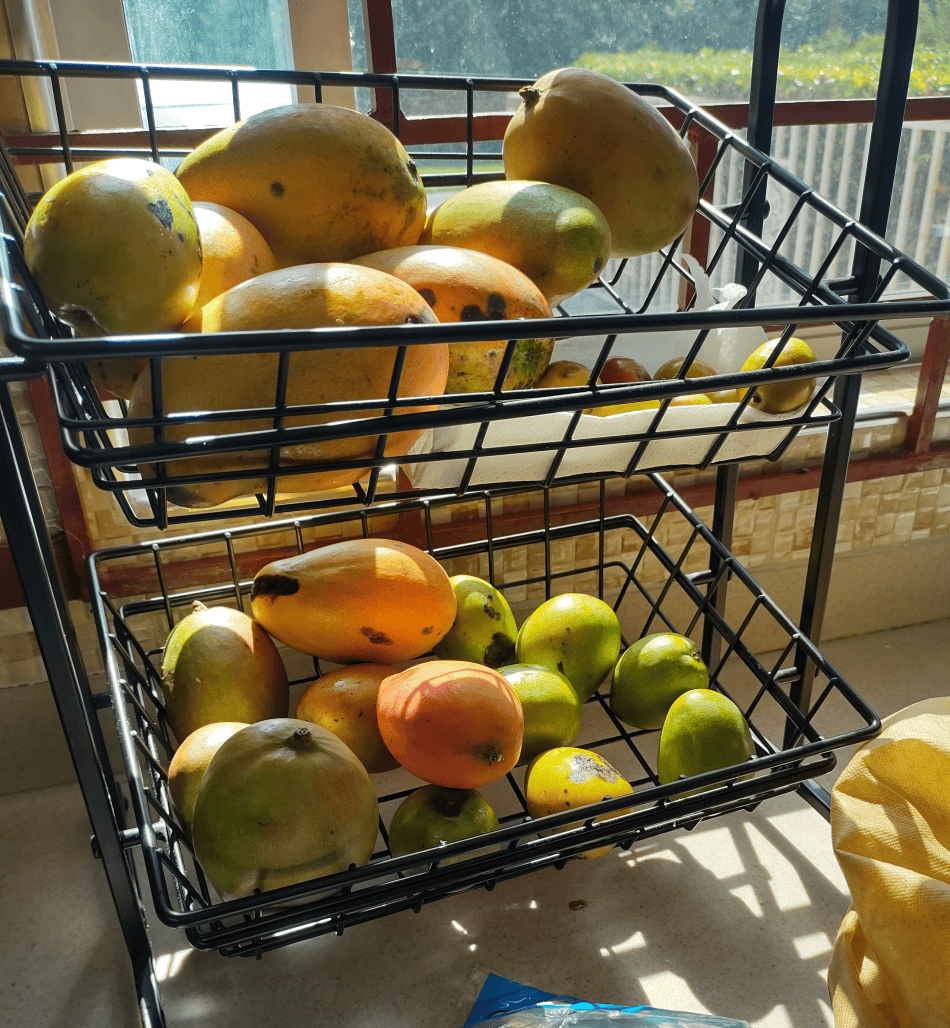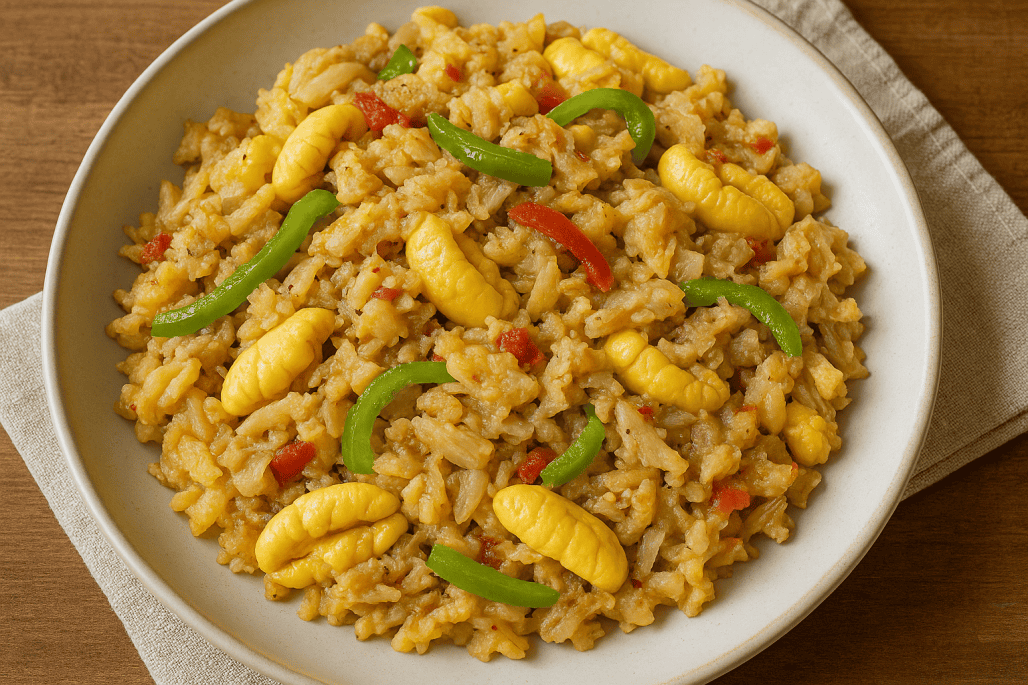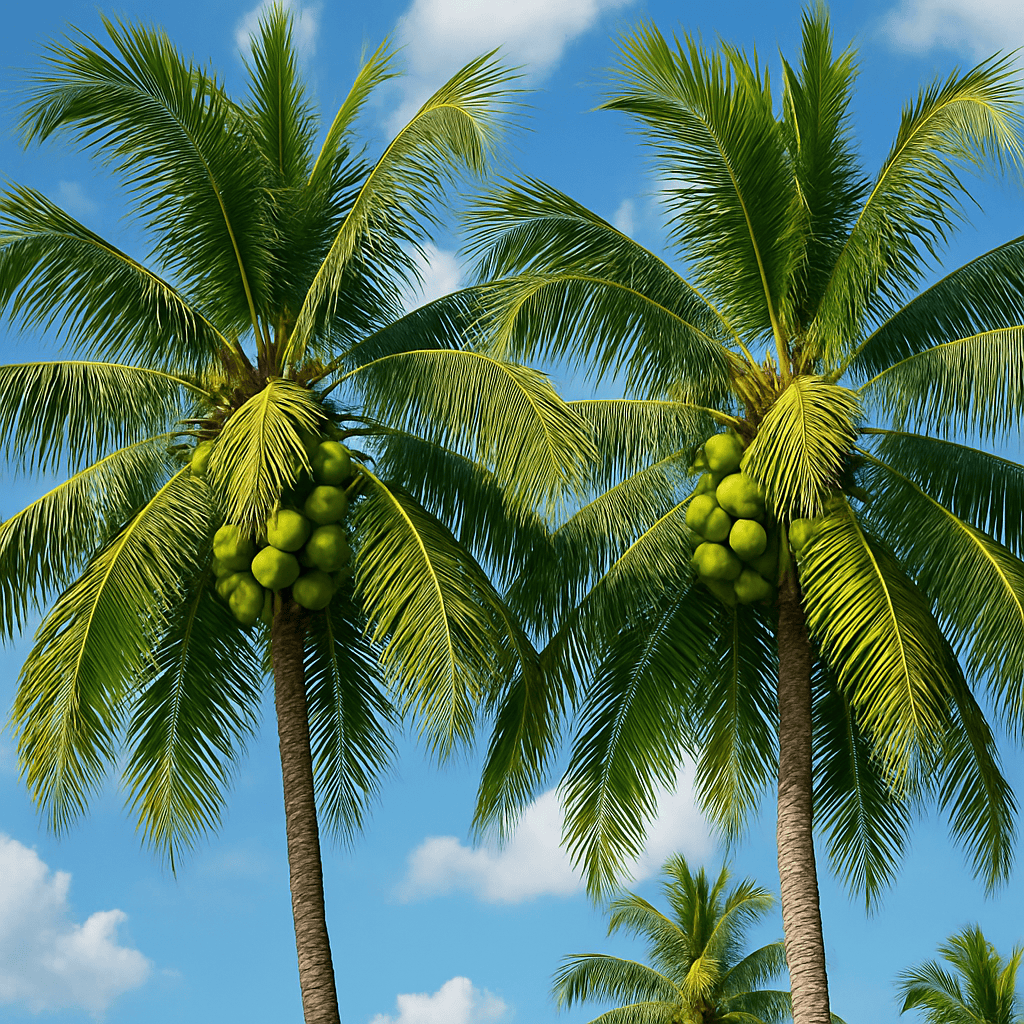Delicious Jamaican Fruits You Can Try
Jamaica’s tropical climate, fertile soil, and year-round sunshine provide ideal conditions for producing a wide variety of flavorful fruits. From well-known delights like mangoes and papayas to more unfamiliar regional offerings such as sweetsop and naseberry, you can find a massive fruit selection that reflects its biodiversity and cultural heritage.
For visitors looking to experience the sweet side of Jamaica beyond the delicious jerk dishes and seafood, exploring the local fruit markets or sampling fresh produce from roadside vendors is an excellent way to taste fruits you’ve never even heard of before.
Below is a small guide to some of the most popular and distinctive fruits you can try while visiting Jamaica.
Jamaican Mangoes
Mangoes are among the most widely consumed Jamaican fruits, with several varieties available during the peak season between April and July. Locals often regard mango season as a highlight of the year due to the fruit’s abundance and quality.
Notable varieties include:
- East Indian: Large, sweet, and slightly fibrous.
- Julie: Smaller, tangy, and firm with minimal fiber.
- Bombay: Soft, highly aromatic, and rich in flavor.
- Blackie: Dark-skinned and exceptionally sweet.
Mangoes are typically eaten fresh, blended into juices, or used in sauces and chutneys. The flavor and texture are significantly enhanced when ripened naturally on the tree.
Guava
Guava is widely available across Jamaica and can be recognized by its pale green skin and pink or white flesh. It has a sweet smell and a subtly tart flavor profile.
Guava is used in:
- Fresh consumption
- Guava cheese (a dense, sweet paste)
- Juices and smoothies
- Guava jelly
This fruit is rich in vitamin C and dietary fiber, making it both a flavorful and nutritious choice.
Papaya (Pawpaw)
Known locally as pawpaw, papaya is a soft, orange-fleshed fruit that is commonly served at breakfast or as a light snack. It has a mildly sweet flavor and a smooth, custard-like texture.
It is often consumed with a little lime juice to enhance its taste. Papaya is well-regarded for its digestive enzymes, particularly papain, and is commonly used for culinary and health-related purposes.
Guineps
Guineps, also known as Spanish lime, are small, green fruits that grow in bunches and are commonly sold by roadside vendors during the summer months.
The fruit is enclosed in a brittle outer shell, which reveals a jelly-like pulp surrounding a large seed. Its taste is a mix of tart and sweet, and it is often consumed fresh. Guineps are a popular snack among locals and are easy to find when in season.
Soursop
Soursop is a green, spiny fruit with soft, white pulp and a flavor that blends sweetness with a slight tartness. It is used in a variety of Jamaican beverages and desserts.
Common preparations include:
- Soursop juice
- Smoothies
- Ice cream
- Soursop punch
In addition to its flavor, soursop is sometimes valued for its potential antioxidant and anti-inflammatory properties.
Sweetsop
Sweetsop, also known as sugar apple, is smaller than soursop and has a knobby exterior. Inside, it contains creamy, sweet flesh that is segmented around small black seeds.
The fruit is typically eaten fresh and is known for its custard-like consistency and high sugar content. It is less commonly used in cooking or drinks due to its soft texture and the number of seeds.
Jackfruit
Jackfruit is the largest tree-borne fruit in the world, often reaching weights of over 30 pounds. In Jamaica, it is consumed both ripe and unripe.
- Ripe jackfruit has yellow, fragrant pods with a taste resembling a blend of banana and pineapple.
- Unripe jackfruit is cooked and used as a plant-based meat substitute in savory dishes.
Jackfruit seeds are also edible when roasted or boiled.
Caribbean Apple
Also known as Malay apple or Jamaican apple, the Otaheite apple is pear-shaped with shiny red skin and crisp, white flesh. The flavor is mildly sweet and refreshing.
It is typically eaten raw and is especially enjoyable when chilled. The fruit is seasonal, usually appearing in spring and early summer.
Starfruit
Called “five finger” in Jamaica, starfruit gets its name from the star-shaped cross-sections when sliced. The fruit is golden-yellow when ripe and has a juicy texture with a tart-to-sweet flavor range.
Starfruit is commonly used in:
- Fresh fruit platters
- Juices
- Garnishes for salads and beverages
It contains antioxidants and is rich in vitamin C.
Naseberry
Known in other regions as sapodilla, naseberry is a small, round fruit with a rough brown exterior and soft, sweet brown flesh. Its flavor is often compared to brown sugar or caramel.
Naseberries are consumed fresh and occasionally used in baked goods. The fruit has a granular texture and a high natural sugar content.
June Plum
June Plum, also called golden apple, is an oval fruit with smooth green or yellow skin and a fibrous seed in the center. It has a tart flavor when green and a sweet-tart balance when ripe.
Locals enjoy it:
- Raw, with salt and pepper
- In juices blended with ginger
- As a base for chutneys or pickled condiments
It is high in vitamin C and provides a crisp, refreshing taste.
Ackee
Although not typically eaten as a sweet fruit, ackee is Jamaica’s national fruit and is essential to the country’s cuisine. It is the main component in the national dish, ackee and saltfish.
When ripe, the ackee pod opens to reveal soft, yellow flesh and large black seeds. Only the yellow flesh is edible — unripe ackee contains toxins and must be properly prepared.
Ackee is cooked and served in savory meals and should only be handled by those familiar with its preparation guidelines.
Tamarind
Tamarind is a brown, pod-like fruit containing a sticky, dark pulp. It has a distinctly sour flavor, often accompanied by subtle sweetness.
In Jamaica, tamarind is consumed:
- Fresh with salt
- As tamarind balls (a local sweet and sour candy)
- In sauces or drinks
It is popular among both children and adults and can be found at local markets year-round.
Passion Fruit
Known locally as Sweet Cup, passion fruit is a small, round fruit with a tough purple skin and aromatic yellow pulp filled with edible seeds.
Its tart, tropical flavor makes it a popular ingredient in:
- Natural fruit juices
- Mixed beverages
- Desserts
The fruit is rich in vitamin C and dietary fiber and is commonly used in both home and commercial preparations.
Coconut
While technically a stone fruit, coconut is one of the most important tropical staples in Jamaican cuisine and daily life.
Coconut is consumed in multiple forms:
- Young coconut water (a natural electrolyte-rich drink)
- Jelly coconut (soft, spoonable flesh inside young coconuts)
- Mature coconut (used to produce coconut milk and grated for cooking rice and peas)
Coconuts are available throughout the year and are used in beverages, savory dishes, and desserts.
Try These Jamaican Fruits to Enhance Your Experience
Trying local fruits while traveling offers insight into the agricultural practices, climate, and cultural preferences of the region. In Jamaica, fruit is more than just food — it’s part of the national identity, found in traditional dishes, beverages, home remedies, and casual snacking.
Visitors can experience authentic flavors not typically available outside of the Caribbean, especially because many of these fruits are best consumed fresh and fully ripened on the tree. Many fruits also vary by season, so the selection will differ depending on the time of year.
Where to Find These Fruits in Jamaica
Travelers can sample Jamaican fruits at:
- Local markets such as Coronation Market in Kingston or Charles Gordon Market in Montego Bay.
- Roadside stalls, where vendors sell fresh fruits from nearby trees and farms.
- Resorts and hotels, where fruit is often served during breakfast or in juices.
- Natural juice bars and health food cafés in urban and tourist-friendly areas.
Asking locals for in-season recommendations is one of the best ways to ensure you try fruit at its peak.
Jamaica offers a diverse and vibrant selection of tropical fruits, many of which are grown organically and consumed seasonally. From common favorites like mangoes and coconuts to lesser-known options such as guineps and naseberries, these fruits contribute significantly to the island’s food culture.
For travelers interested in local experiences, sampling these fruits provides a deeper understanding of Jamaica’s environment, traditions, and culinary practices. Whether purchased from a market vendor or included in a resort breakfast, each fruit offers an authentic taste of the island.












